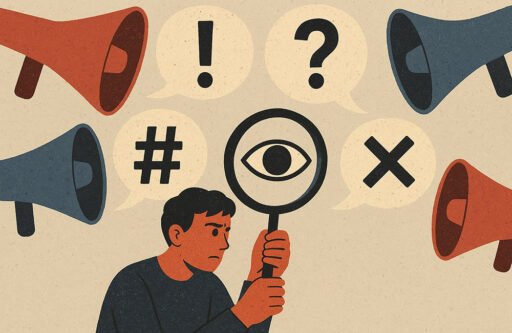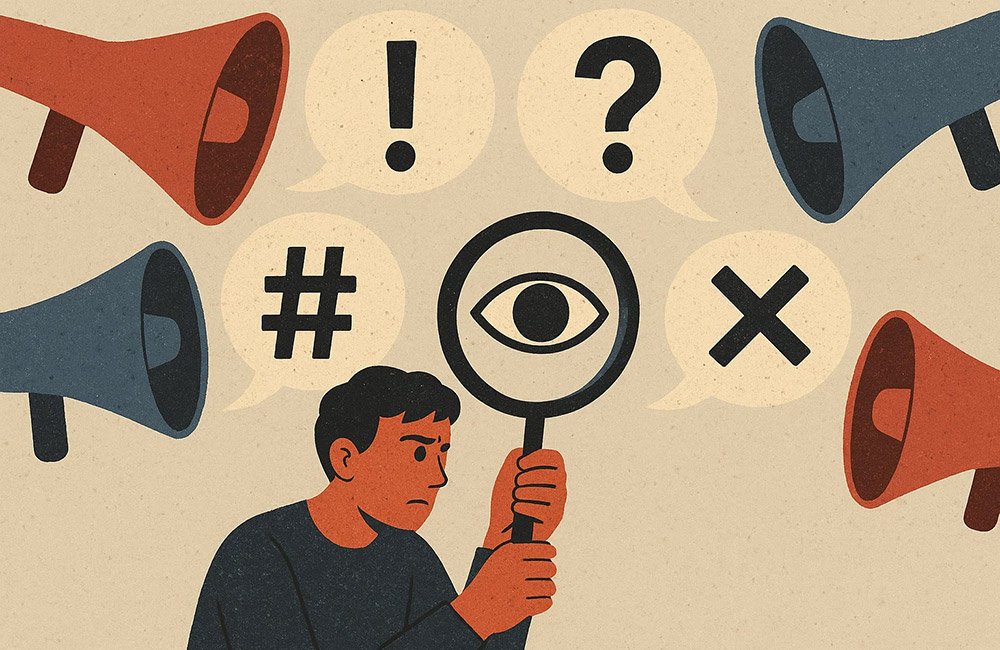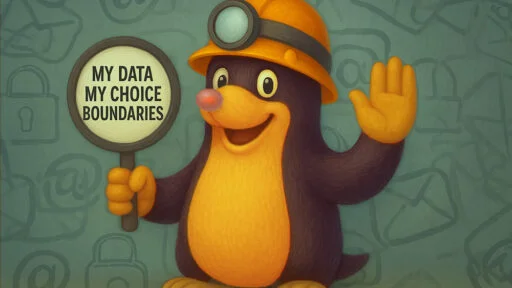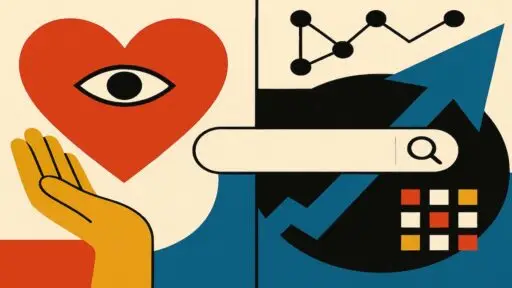Table of Contents
Here’s How I Search for Truth Online
How I search for truth has evolved. There was a time when truth felt solid, printed, cited, and verifiable. You could open a newspaper or a textbook and believe that what you were reading had passed through some kind of shared filter. These days, truth feels more like mist. You can see it for a second, reach for it, and it changes shape.
I used to think finding the truth online was just about knowing the right keywords to type. But I’ve come to see it differently now. It’s more like meditation, actually—what you bring to the search shapes what you end up finding. The web mirrors us. Click on certain things enough times, and the algorithms pick up on it. Before you know it, they’re showing you a world that just confirms what you already think.
In this article, I share how I search for truth when everything from headlines to hashtags seems designed to persuade and manipulate behavior.
1. The Noise Problem
The internet never stops talking. News feeds, recommendation engines, and notifications compete for attention, and the loudest voices win. Outrage performs better than nuance, so we end up scrolling through a theater of extremes.
The effect is quiet but corrosive, and after a while, every headline sounds urgent, and every opinion sounds absolute. Even reality begins to feel negotiable.
When I catch myself doom-scrolling, I remember something simple: truth rarely shouts or screams. It usually sits somewhere in the middle, waiting for you to slow down enough to notice.
Before I search, I take a breath. I ask what I’m really trying to know. Not what I want confirmed, but what I’m willing to understand. That tiny pause is the first act of discernment.
2. How I Ground Myself Before Searching
The biggest mistake I used to make was starting from emotion — anger, fear, curiosity, or even boredom. Emotion pulls you toward confirmation, and it wants to be right.
Now, before I search, I try to name the feeling behind the question. If I’m anxious about something, I remind myself that anxiety isn’t evidence. If I’m hopeful, I check whether that hope is coloring the keywords I choose.
That is “grounding,” not a ritual, just awareness. Because in the age of algorithmic feeds, your mindset is part of the search engine.
Truth doesn’t appear faster just because you’re impatient. It takes patience to find information that isn’t written just for clicks.
3. How I Search for Truth and What I Look For
When I research something complex like a health claim, a new technology, or a political story, I look for the edges, not just the center. That means reading laterally instead of vertically.
Rather than staying on one site, I open several tabs: mainstream outlets, local reports, academic summaries, and fact-checking organizations. I want to see how different people frame the same event.
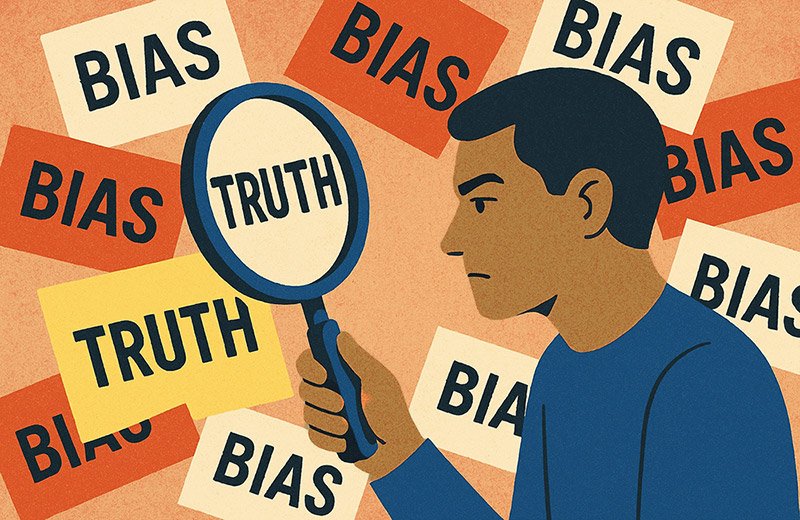
If a source quotes a study, I trace it back to the original paper. If an article uses dramatic language, I note what data it leaves out. Bias reveals itself not only in what’s said, but in what’s omitted.
I’ve also learned to check an author’s credentials, publication date, and affiliations. Who funded this piece? Who benefits from my believing it? Those two questions alone filter out most of the noise.
And if I’m still unsure, I look for disagreement among credible experts. When people who are qualified to know still debate something, it means the truth is still forming.
4. How I Handle Conflicting Information
One of the hardest lessons online is that contradiction doesn’t always mean deception. Sometimes two statements can both be factual, depending on the frame. When I see conflicting claims, I zoom out. What definitions are each side using? What time period, what data set, and what assumptions? Often, the “fight” dissolves once you realize everyone’s talking about slightly different things.
If I can’t verify something, I bookmark it rather than share it. A day later, the emotional charge fades, and I can see it more clearly.
Uncertainty is uncomfortable, but it’s part of being informed. The goal isn’t to replace doubt with certainty but to replace confusion with clarity.
5. What I’ve Learned About Bias
Bias used to sound like a moral flaw, as if only bad actors had it. Now I understand that bias is simply perspective wearing clothes. Everyone has it; it’s what makes us human.
Recognizing bias isn’t about pretending to be neutral. It’s about noticing which direction you naturally lean, and adjusting your footing before you fall.
Algorithms have biases too — they optimize for engagement, not enlightenment. When I realize that, I stop taking recommendations personally. The feed isn’t evil; it’s just mechanical. But awareness lets me use it instead of letting it use me.
The Stanford History Education Group calls this “civic online reasoning” — the ability to judge what’s credible, who created it, and why. It’s a skill that used to belong primarily to journalists; now it belongs to everyone with Wi-Fi.
6. Relearning What “Truth” Means
After years of searching, I’ve stopped expecting truth to arrive as a headline. It usually comes as a mosaic — a pattern you start to see only after collecting enough small, reliable pieces.
When something feels too convenient, I ask myself whether it confirms my worldview a little too neatly. Truth often asks for humility; propaganda offers comfort.
If I find a claim that makes me angry, I sit with it before reacting. I might still disagree, but at least I understand where the other side starts. That awareness doesn’t dilute conviction — it strengthens it.
7. Why This Matters
The ability to search well is the new literacy. It’s not about mastering shortcuts or advanced operators — it’s about cultivating attention in a system designed to scatter it.
The web is full of knowledge, but wisdom requires friction. It comes from comparing, questioning, rereading, and resisting the urge to be done in little or no time.
I’ve learned that truth isn’t some fixed spot you can find on the internet. It’s more like a direction you’re always moving toward. Every time you click carefully, pause to question something, or read with an open mind, you get a little closer.
The best we can do is keep moving toward clarity one search at a time.
Sources
- Pew Research Center. “How Americans Approach Facts and Information.” July 2023. Examines how U.S. adults navigate trust, facts, and misinformation on “ine.
- Stanford History Education Group. “Evaluating Information: The Cornerstone of Civic Online Reasoning.” Research on digital literacy and evaluating credibility.
- Harva “d Kennedy School – Shorenstein Center. “Understanding Media Bias in the Digital Age.” Frameworks for recognizing systemic and algorithmic bias.
Related reading on How I Search
Reliable Fact-Checking & Bias-Verification Sources
For readers who want to dig deeper, here are reliable, transparent organizations that specialize in verifying claims and tracking media bias:
- Snopes – Longest-running fact-checking site, great for viral rumors and misinformation history.
- PolitiFact – Nonpartisan project from the Poynter Institute that rates political statements for accuracy.
- FactCheck.org – Run by the Annenberg Public Policy Center at the University of Pennsylvania.
- Reuters Fact Check – Global verification desk focusing on misinformation and manipulated media.
- AP Fact Check – Covers political, health, and social media claims with verified sourcing.
- Media Bias / Fact Check – Tracks bias and factual accuracy of major outlets (best used for orientation, not verdicts).
- Google Fact Check Explorer – Aggregates fact-checks from verified organizations worldwide.
- International Fact-Checking Network (IFCN) – A registry of certified, independent fact-checking groups.


